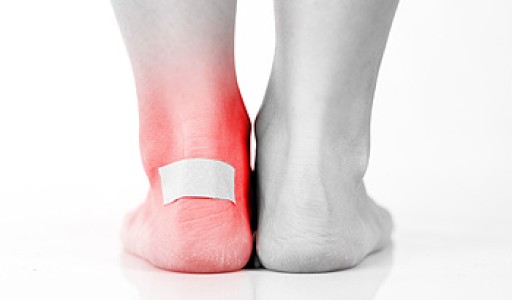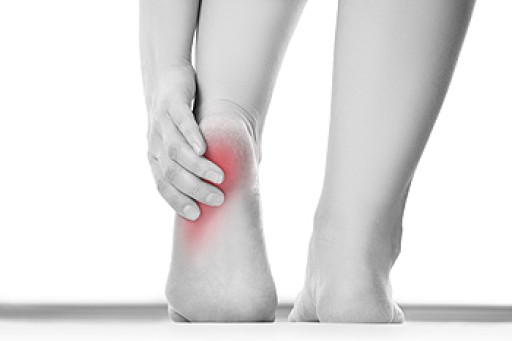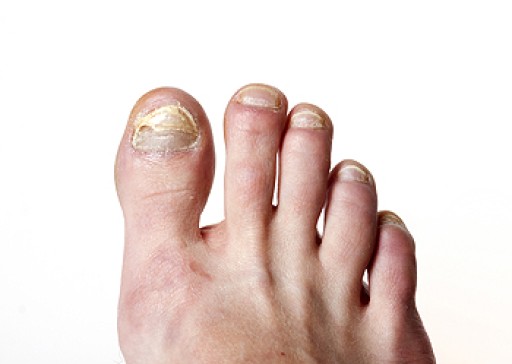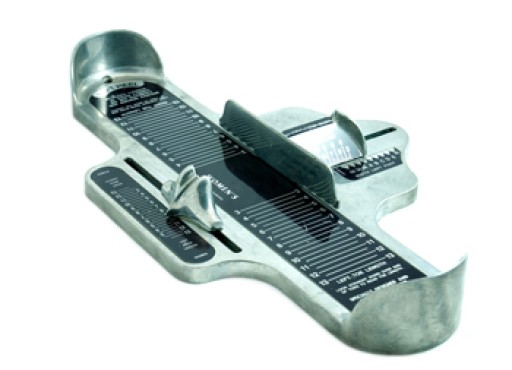Blisters are pockets of fluid that occur under the top layer of your skin. These fluid pockets are usually filled with pus, blood, or serum. Blisters may itch or hurt and can appear as a single bubble or in clusters.
The most common types of blisters are friction blisters. This type of blister may be caused by wearing shoes that are too tight. Friction blisters can also occur on the hands. A change in temperature may also cause blisters on the feet. In the freezing air, frostbite on your toes can lead to blisters, as well as sunburn from hot weather.
The best way to treat a blister is to keep it clean and dry. Most blisters will get better on their own. Once the skin absorbs the fluid within the blister, it will flatten and eventually peel off. You should avoid popping your blister unless you podiatrist does it for you. Additional treatment options include applying an ice pack to the blister or using over-the-counter blister bandages to cover the affected area.
If your blister becomes discolored, inflamed, or worsens it is advised that you speak to your podiatrist. Blisters that are yellow, green, or purple may be infected and require immediate medical attention. Blisters that are abnormally colored may be a sign of a more serious underlying health condition such as herpes.
If you have a blister on your foot, you may feel tempted to pop the fluid-filled pocket under your skin. Should you? The general consensus is that you probably shouldn’t. A blister is filled with serum, the liquid part of your blood that contains protective substances like antibodies. Popping or draining your blister removes the serum and makes a hole in your skin, opening the area up to infection. Popping the blister can also cause more pain than simply having an intact blister on your foot. Additionally, it is very important to avoid popping your foot blister if you have diabetes, heart failure, peripheral artery disease, swollen legs, venous ulcers, or a condition that affects your immune system, as these things can increase your chances of getting an infection. If you have a painful foot blister, it is recommended that you visit a podiatrist for treatment.
Blisters are prone to making everyday activities extremely uncomfortable. If your feet are hurting, contact Frank Henry, DPM of Marble Falls, TX. Our doctor can provide the care you need to keep you pain-free and on your feet.
Foot Blisters
Foot blisters develop as a result of constantly wearing tight or ill-fitting footwear. This happens due to the constant rubbing from the shoe, which can often lead to pain.
What Are Foot Blisters?
A foot blister is a small fluid-filled pocket that forms on the upper-most layer of the skin. Blisters are filled with clear fluid and can lead to blood drainage or pus if the area becomes infected.
How Do Blisters Form?
Blisters on the feet are often the result of constant friction of skin and material, usually by shoe rubbing. Walking in sandals, boots, or shoes that don’t fit properly for long periods of time can result in a blister. Having consistent foot moisture and humidity can easily lead to blister formation.
Prevention & Treatment
It is important to properly care for the affected area in order to prevent infection and ease the pain. Do not lance the blister and use a Band-Aid to provide pain relief. Also, be sure to keep your feet dry and wear proper fitting shoes. If you see blood or pus in a blister, seek assistance from a podiatrist.
If you have any questions, please feel free to contact our office located in Marble Falls, TX . We offer the newest diagnostic and treatment technologies for all your foot care needs.
Heel pain can be difficult to deal with, especially if you do not know what the underlying cause is. If you ignore your heel pain, the pain can magnify and potentially develop into a chronic condition. Depending on the location of your heel pain, you have developed a specific condition.
One condition is plantar fasciitis. Plantar fasciitis is caused by the inflammation of the plantar fascia, or the band of tissue that connects the heel bone to the base of the toes. The pain from this condition is initially mild but can intensify as more steps are taken when you wake up in the morning. To treat this condition, medication will likely be necessary. Plantar fasciitis is often associated with heel spurs; both require rest and special stretching exercises.
There are various options your podiatrist may suggest for heel pain. Treatment options for heel pain typically include non-steroidal anti-inflammatory drugs (NSAIDS), which may reduce swelling and pain. Other options are physical therapy, athletic taping, and orthotics. In severe cases of heel pain, surgery may be required.
Preventing heel pain is possible. If you are looking to prevent heel pain from developing in the future, be sure to wear shoes that fit you properly and do not have worn down heels or soles. Be sure to warm up properly before participating in strenuous activities or sports that place a lot of a stress on the heels. If you are experiencing any form of heel pain, speak with your podiatrist to determine the underlying cause and receive the treatment you need.
 Heel pain can be a common issue that a lot of runners experience. The style of your running stride, as well as overuse, can be factors in why you may be experiencing heel pain, however certain conditions may also be the cause. Fallen arches, or flat feet, as they're more commonly referred to, can create heel pain after a run due to the misshapen structure of the feet. The lack of an arch may put added stress or strain on the plantar fascia. The role of the plantar fascia is to connect the heel bone to the toes. If this tears, or becomes inflamed, another common heel condition known as plantar fasciitis may develop. For more information on what conditions may affect your heels, especially for runners, please consult with a podiatrist.
Heel pain can be a common issue that a lot of runners experience. The style of your running stride, as well as overuse, can be factors in why you may be experiencing heel pain, however certain conditions may also be the cause. Fallen arches, or flat feet, as they're more commonly referred to, can create heel pain after a run due to the misshapen structure of the feet. The lack of an arch may put added stress or strain on the plantar fascia. The role of the plantar fascia is to connect the heel bone to the toes. If this tears, or becomes inflamed, another common heel condition known as plantar fasciitis may develop. For more information on what conditions may affect your heels, especially for runners, please consult with a podiatrist.
Many people suffer from bouts of heel pain. For more information, contact Frank Henry, DPM of Marble Falls, TX. Our doctor can provide the care you need to keep you pain-free and on your feet.
Causes of Heel Pain
Heel pain is often associated with plantar fasciitis. The plantar fascia is a band of tissues that extends along the bottom of the foot. A rip or tear in this ligament can cause inflammation of the tissue.
Achilles tendonitis is another cause of heel pain. Inflammation of the Achilles tendon will cause pain from fractures and muscle tearing. Lack of flexibility is also another symptom.
Heel spurs are another cause of pain. When the tissues of the plantar fascia undergo a great deal of stress, it can lead to ligament separation from the heel bone, causing heel spurs.
Why Might Heel Pain Occur?
- Wearing ill-fitting shoes
- Wearing non-supportive shoes
- Weight change
- Excessive running
Treatments
Heel pain should be treated as soon as possible for immediate results. Keeping your feet in a stress-free environment will help. If you suffer from Achilles tendonitis or plantar fasciitis, applying ice will reduce the swelling. Stretching before an exercise like running will help the muscles. Using all these tips will help make heel pain a condition of the past.
If you have any questions please contact our office located in Marble Falls, TX . We offer the newest diagnostic and treatment technologies for all your foot and ankle needs.
Fungal infection of the toenail, or onychomycosis, typically appears as a gradual change in a toenail’s texture and color that involves brittleness and darkening. The fungal infection itself occurs beneath the surface of the nail. Aside from discoloration, other symptoms include the collection of debris beneath the nail plate, white marks on the nail plate, and a foul odor emanating from the nail. If ignored, the infection can spread into other nails and the skin; in severe cases, it can hinder one’s ability to work or walk.
The toenails are particularly vulnerable to contracting infection in moist environments where people are likely to be walking barefoot, such as around swimming pools, public showers, and locker rooms. Fungal infection may also be more likely to occur in nail beds that have been injured, and sufferers of chronic diseases such as diabetes, circulatory problems, or immunodeficiency conditions are particularly prone to developing fungal nails.
Fungal nails can be primarily prevented by practicing proper hygiene and regularly examining the feet and toes. Carefully washing the feet with soap and water and thoroughly drying the feet afterwards are essential. Other tips include wearing shower shoes in public areas, changing shoes and socks daily, keeping toenails clipped at a short length, wearing breathable shoes that fit properly, wearing moisture-wicking socks, and disinfecting home pedicure tools and instruments used to cut nails.
Fungal nail treatment may vary between patients and the severity of the condition. Your podiatrist may suggest a daily routine of cleansing that spans over a period of time to ease mild infections. Over-the-counter or prescription antifungal agents may also be prescribed, including topical and/or oral medications. Debridement, or the removal of diseased nail matter and debris, may also be performed. In more severe cases, surgical treatment may be needed. In some instances, the temporary removal of the fungal nail allows for the direct application of a topical antifungal to the nail bed. In other cases, a chronically painful fungal nail that has not responded to other treatments may be permanently removed; this allows the infection to be cured and avoids the growth of a deformed nail.
 A contagious foot condition that affects the toes is known as toenail fungus. One of the most common symptoms related to toenail fungus is the discoloration of the affected toenail. Toenails may have a whitish to yellowish spot on the affected toenail. When not treated promptly, the symptoms and fungus can easily spread from toe to toe. Other symptoms can include the nail thickening, becoming brittle and crumbly, or taking on a distorted shape. Fungus thrives in warm and moist environments, so it is important to ensure that you have the proper footwear on while in locations such as communal swimming pools or locker room areas. Wearing proper footwear may help to prevent you from getting this condition. For more advice on how to treat toenail fungus, please consult with a podiatrist.
A contagious foot condition that affects the toes is known as toenail fungus. One of the most common symptoms related to toenail fungus is the discoloration of the affected toenail. Toenails may have a whitish to yellowish spot on the affected toenail. When not treated promptly, the symptoms and fungus can easily spread from toe to toe. Other symptoms can include the nail thickening, becoming brittle and crumbly, or taking on a distorted shape. Fungus thrives in warm and moist environments, so it is important to ensure that you have the proper footwear on while in locations such as communal swimming pools or locker room areas. Wearing proper footwear may help to prevent you from getting this condition. For more advice on how to treat toenail fungus, please consult with a podiatrist.
For more information about treatment, contact Frank Henry, DPM of Marble Falls, TX. Our doctor can provide the care you need to keep you pain-free and on your feet.
Toenail Fungus Treatment
Toenail fungus is a condition that affects many people and can be especially hard to get rid of. Fortunately, there are several methods to go about treating and avoiding it.
Antifungals & Deterrence
Oral antifungal medicine has been shown to be effective in many cases. It is important to consult with a podiatrist to determine the proper regiment for you, or potentially explore other options.
Applying foot powder on the feet and shoes helps keep the feet free of moisture and sweat.
Sandals or open toed shoes – Wearing these will allow air movement and help keep feet dry. They also expose your feet to light, which fungus cannot tolerate. Socks with moisture wicking material also help as well.
If you have any questions please feel free to contact our office located in Marble Falls, TX . We offer the newest diagnostic tools and technology to treat your foot and ankle needs.
Many people suffer from foot problems because their shoes are poorly fitted. When shopping for a new pair of shoes, fashion usually triumphs over comfortability. A pair of well fitted shoes is essential in preventing foot problems and potential injuries.
Poorly fitted shoes can cause foot issues such as plantar fasciitis, bunions, hammertoes, ingrown toenails, and foot pain. Shoes such as high heels and sandals may cause problems for your feet. These shoes put the foot in an unnatural position for long periods and fail to provide good foot support. It is recommended to not wear either one for an extended period.
When you are trying on shoes, make sure they have enough space for your toes to move around. Shoes shouldn’t be cramped but also shouldn’t have too much room that your foot moves around in them. A snug shoe is a good choice. They should also provide good arch support and cushioning. Athletic shoes tend to offer both good support and cushioning. A degree of flexibility is necessary so they aren’t too stiff or too unsupportive.
If you can wear your shoes for a long period of time without experiencing any discomfort, this is a sign that your shoes fit properly. Do not be too dismayed if the shoe isn’t a perfect fit at first; many shoes take a few days to weeks to properly break in. However don’t expect an uncomfortable shoe to become fitted to your foot.
For those with foot conditions such as flat feet or pronation, orthotics may be helpful or even necessary to prevent foot pain. Orthotics are inserts that are placed in the shoe and provide support and cushioning for the foot. While there are many types of orthotics out there, custom-made orthotics may be necessary depending upon your foot and foot conditions.
Feet change in size over time. It is important to check your foot size over time so that you can make sure you have the perfect fit for your feet. A podiatrist can provide more information on proper shoe fitting and foot orthotics.
 The apparatus that is referred to as a Brannock device is an accurate tool for measuring your foot to determine your correct shoe size. When this is accomplished, the proper size shoes can be purchased. It is important for your shoes to have adequate room for the toes to move freely in. This may be helpful in preventing painful foot conditions from developing, such as bunions and hammertoes. Additionally, it is helpful to ensure that the ball of the foot lines up with the ball of the shoe. Shoes that fit correctly will feel good when they are tried on, and it is generally unnecessary to break them in. If you would like to know more information about how to purchase shoes that fit correctly, please consult with a podiatrist.
The apparatus that is referred to as a Brannock device is an accurate tool for measuring your foot to determine your correct shoe size. When this is accomplished, the proper size shoes can be purchased. It is important for your shoes to have adequate room for the toes to move freely in. This may be helpful in preventing painful foot conditions from developing, such as bunions and hammertoes. Additionally, it is helpful to ensure that the ball of the foot lines up with the ball of the shoe. Shoes that fit correctly will feel good when they are tried on, and it is generally unnecessary to break them in. If you would like to know more information about how to purchase shoes that fit correctly, please consult with a podiatrist.
It is important to find shoes that fit you properly in order to avoid a variety of different foot problems. For more information about treatment, contact Frank Henry, DPM from Marble Falls, TX. Our doctor will treat your foot and ankle needs.
Proper Shoe Fitting
Shoes have many different functions. They cushion our body weight, protect our feet, and allow us to safely play sports. You should always make sure that the shoes you wear fit you properly in order to avoid injuries and deformities such as: bunions, corns, calluses, hammertoes, plantar fasciitis, stress fractures, and more. It is important to note that although a certain pair of shoes might be a great fit for someone else, that doesn’t mean they will be a great fit for you. This is why you should always try on shoes before buying them to make sure they are worth the investment. Typically, shoes need to be replaced ever six months to one year of regular use.
Tips for Proper Shoe Fitting
- Select a shoe that is shaped like your foot
- Don’t buy shoes that fit too tight, expecting them to stretch to fit
- Make sure there is enough space (3/8” to ½”) for your longest toe at the end of each shoe when you are standing up
- Walk in the shoes to make sure they fit and feel right
- Don’t select shoes by the size marked inside the shoe, but by how the shoe fits your foot
The shoes you buy should always feel as good as they look. Shoes that fit properly will last longer, feel better, and improve your way of life each day.
If you have any questions, please feel free to contact our office located in Marble Falls, TX . We offer the newest diagnostic and treatment technologies for all your foot care needs.










